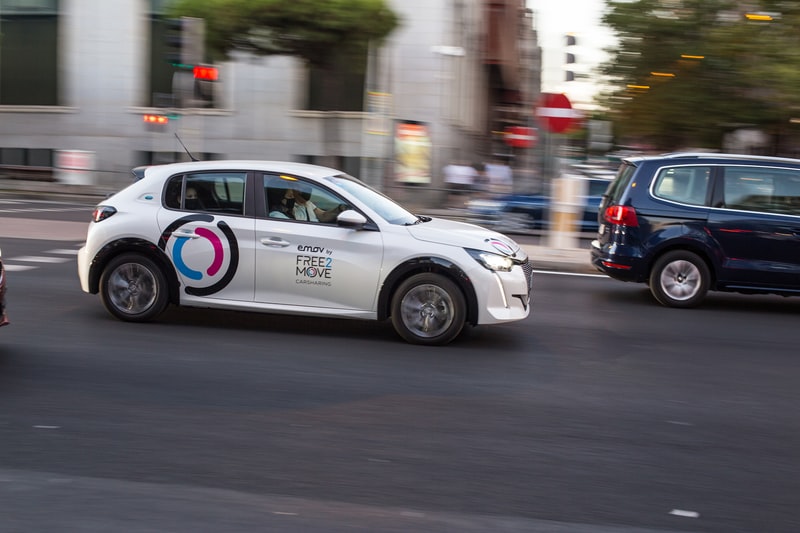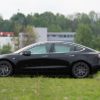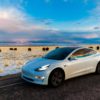
Modern fastest electric Car is faster than the conventional ones for multiple reasons. The Tesla Model S P100D became the fastest accelerating commercial car by hitting 0-60 mph(97 Kmh) in just 2.28 seconds. Other major car companies are also coming up with electric variants with very high torque.
They produce usable torque and power output efficiently in a speed range of 0- 18000 rpm compared to 2000-4000 rpm in an IC engine. It eliminates the need for a variable speed transmission system.
The speed of the induction motor is directly proportional to the frequency of the AC input. Thus varying the rate, we can alter the speed of the drive wheel. This amounts to shorter response times and quicker acceleration.

Fastest Electric Car Vs Conventional Ones
Direct rotational motion and uniform power output eliminate the need for many components giving a high power to weight ratio for the motor, almost ten times as that of IC engines.
The power is in transmission through a single-speed transmission to an open differential. Open differentials are rugged and can carry more torque than traditionally limited-slip differentials. But this causes locking of wheels in different conditions, which is solved by independent wheel selective braking.
The Lithium-ion batteries that power the car are stacking at the bottom of the vehicle. This allows engineers to design vehicles for superior aerodynamics without compromising stability.
There are also limiting factors that prevent electric cars from getting faster.
1) Heat is for production while the batteries dissipate the charge. This reduces the lifespan of the cell. Cooling is to prevent overheating and prolonging the life of the battery. Ethylene Glycol is one of the universal coolants used.
2) it is To raise the mileage and speed of the car, more batteries are needed. This increased weight, thus reducing the rate. Lithium-ion batteries with improved charge storage capabilities are in development to deal with this problem.
3) The traction of the tires is also limiting. As the speed of the tires increases, the coefficient of friction decreases, leading to instability. The ratio of resistance can be improved by increasing the vertical load and introducing superior tires.
An ideal electric car is a balanced mix of different constraints governing performance. Numerous car companies have come up with their concepts and products, making electric cars one of the fastest-growing technological innovation in the automotive industry.

Do Electric Cars Have Transmissions?
However, I feel that it is worth mentioning that in a vehicle that has one motor per axle, there still needs the ability for each tire to rotate at its speed (2 wheel drive would have one engine, and the four-wheel trip would have two motors). You start to turn the wheels on the outside need to cover longer distances. The wheels are on the inside. So because of this, a differential is still needed.
However, I feel as though a better setup would be a motor for each tire that you would like to propel the vehicle forward. This theoretically should allow for no need for a differential, a smaller engine that has less power for each wheel. Also, This may aid in further range and a lighter vehicle. These are theories I have yet to tackle. Maybe someone better at math may be able to add to this.





